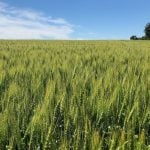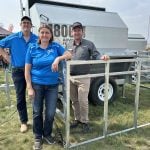
Tag Archives Prairie — page 2

ICE canola weekly outlook: Trends shift lower once again

Prairie Wheat Weekly: Spring wheat advances, durum lower

Precipitation does little for Prairie drought relief
Most areas dryer than a year ago, drought monitor shows

Prairie Wheat Weekly: Bids hold against weak U.S. futures
Low exports, declining Black Sea, European milling wheat prices pressure U.S. wheat

Feed grain weekly outlook: Growers looking at the skies, prices
Barley prices should decline in later spring as growers sell, analyst says

Prairie cash wheat: Most Western Canadian cash prices drop
Surge in Canadian dollar weighed on Prairie cash prices

Saskatchewan Crop Report: Dryness continues as harvest begins
Since April 1, the entirety of the province received 200 mm or less of rain

A detailed look at Prairie heat and rainfall
It has been hot and dry across much of the region, but there’s variation within that trend

Creating a better process for assessing pasture
Stakeholders from across the industry are currently working together to develop a Manitoba-focused rangeland and pasture health assessment

Northern Quinoa aiming for 100,000 acres
Quinoa growers wanted — with the right location and right rotation






